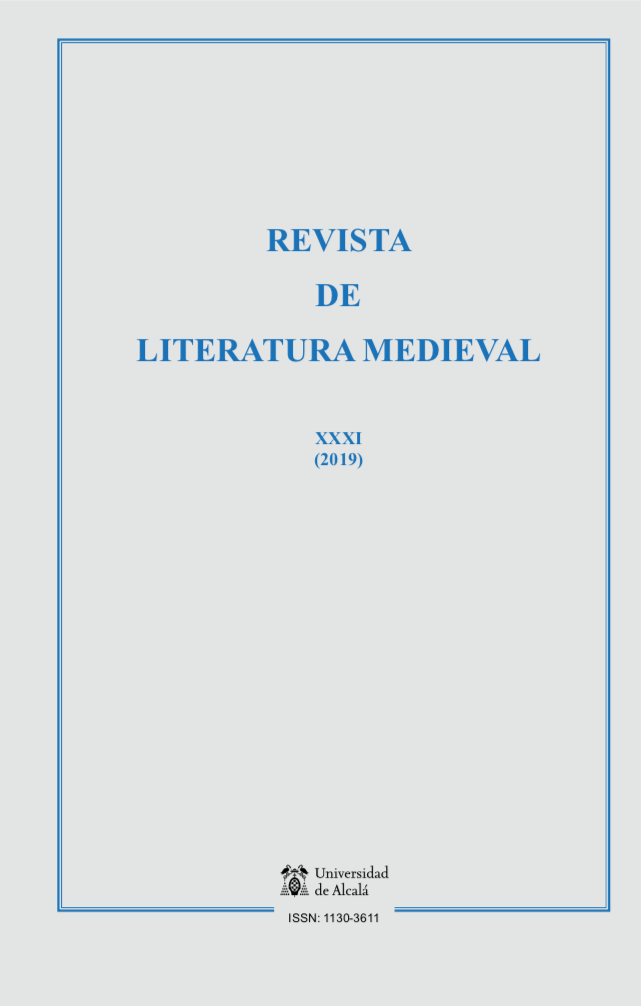Il quinto bersaglio di Peire d’Alvernhe nella satira Chantarai d’aquestz trobadors
DOI:
https://doi.org/10.37536/RLM.2019.31.0.65634Palabras clave:
Peire d’Alvernhe, Satira, Guillem de Ribas, Aragona, PuigvertResumen
Assunto fondamentale del lavoro è che il componimento burlesco di Peire d’Alvernhe Chantarai d’aquestz trobadors venne ideato e congegnato dopo i festeggiamenti per le nozze (settembre 1170) di Alfonso VIII di Castiglia e di Eleonora d’Inghilterra, quando molti dei trovatori, giullari, performatori di disparata provenienza e di svariato spessore professionale accorsi nella penisola iberica per lo straordinario evento erano ancora in terra ultrapirenaica, trattenuti dalla generosa ospitalità del giovane re catalano-aragonese Alfonso II, appassionato di spettacoli leggeri, e dalla splendida accoglienza loro riservata dai grandi feudatari della regione. Tra questi occorre annoverare e porre in prima fila il conte d’Urgel, Ermengaldo VII, coniugato con Dolce, figlia del conte di Foix e cugina di Alfonso II, solito organizzare assieme alla moglie «corti gaudiose» ad Agramunt. A poco più di due chilometri da tale località sorgeva il castello di Puigvert dove, come Peire d’Alvernhe fa sapere, andò per la prima volta in scena il suo recital. Nella stessa contea urgellese viveva ed operava, in base ai materiali documentari dissepolti, il piccolo signore di Ribas, Guglielmo, oggetto degli strali satirici di Peire nella sesta cobbola della beffa musicalcanora.
Descargas
Métricas alternativas
Descargas
Publicado
Cómo citar
Número
Sección
Licencia
Las opiniones y hechos consignados en cada artículo son de exclusiva responsabilidad de sus autores. La Universidad de Alcalá no se hace responsable, en ningún caso, de la credibilidad y autenticidad de los trabajos.
Los autores conservan los derechos sobre sus trabajos, aunque ceden de forma no exclusiva los derechos de explotación (reproducción, edición, distribución, comunicación pública y exhibición) a la revista. Los autores son, por lo tanto, libres de hacer acuerdos contractuales adicionales independientes para la distribución no exclusiva de la versión de la obra publicada en la revista (por ejemplo, alojarlo en un repositorio institucional o publicarlo en un libro), siempre que medie un reconocimiento de su publicación inicial en esta revista.
Los trabajos se publican bajo los términos estipulados en la Licencia de Atribución-NoComercial-CompartirIgual 4.0 Internacional Creative Commons (CC BY-NC-SA 4.0) que permite a terceros compartir la obra bajo las siguientes condiciones:
Atribución — Usted debe dar crédito de manera adecuada, brindar un enlace a la licencia, e indicar si se han realizado cambios. Puede hacerlo en cualquier forma razonable, pero no de forma tal que sugiera que usted o su uso tienen el apoyo de la licenciante.
NoComercial — Usted no puede hacer uso del material con propósitos comerciales.
CompartirIgual — Si remezcla, transforma o crea a partir del material, debe distribuir su contribución bajo la misma licencia del original.









